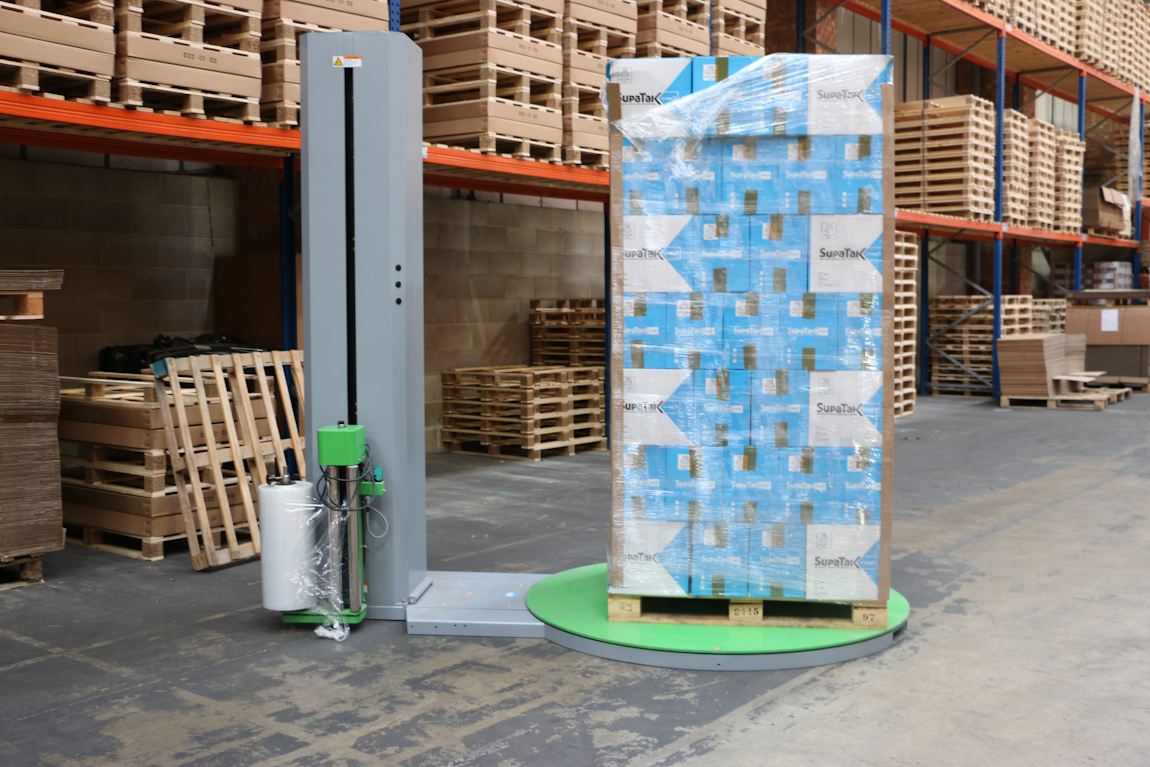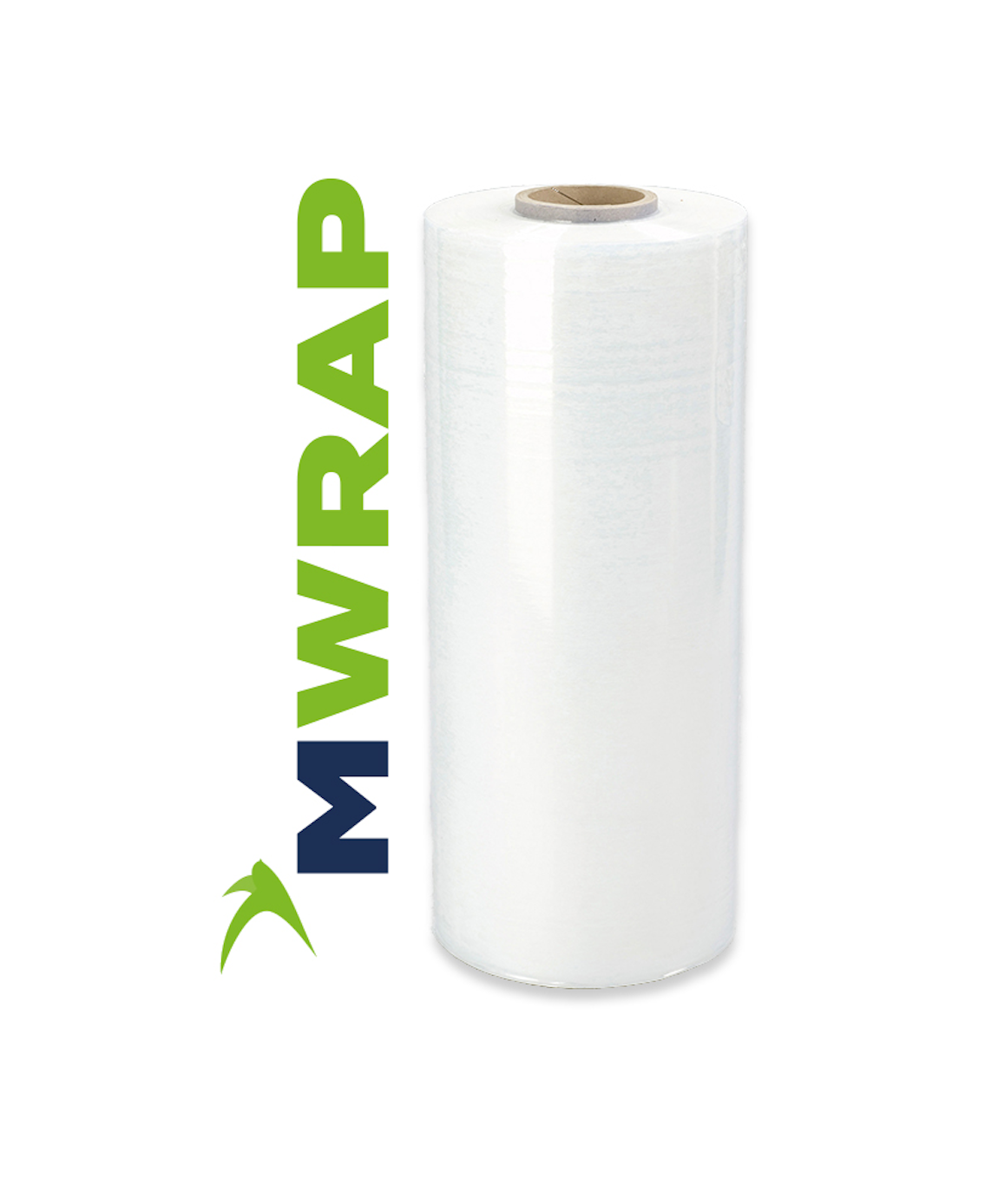Selecting the best stretch wrap for your requirements
The right stretch wrap for your business depends on what products you are trying to wrap. When selecting the best stretch film, you should consider the following:
Performance
Selecting a stretch film that provides the right yield strength and performance for the loads being wrapped is crucial. The yield strength denotes the amount of stress a stretch film can withstand without permanently having plastic deformation. Prior to reaching the yield point a stretch film will elastically deform but return to its original shape once the stress is removed.
Overlapping
This is a technique for covering the top of your pallet using polythene top sheets. This protects your products and provides a downward force on the pallet load. When overlapping hand applied films, it is recommended users allow up to a 50% overlap. If using machine applied films, users should allow a 50mm overlap, regardless of the film width.
Banding
This refers to applying multiple wraps of stretch film to a particular area of a pallet to reinforce the load or band multiple units together.
Neckdown
This happens when a film loses its dispensing roll width and narrows down while being stretched. Neckdown reduces the coverage each wrap provides thereby making it likely that more wrap rotations and more film will be needed to wrap a load or pallet.
Products
Consider the products being wrapped, also look at the weight load (typically per pallet), the load profile as described below, and the transit process the load will experience.
![Load examples]()
Time, Use and Cost Use
Hand wrapping is best suited for smaller or sporadic stretch film wrapping requirements. For example, if you are moving home or office, hand wrapping with stretch wrap will be more than adequate. For a closer look on how to best plan your home or office move, here is the ultimate moving guide.
Alternatively, introducing machine wrapping may ultimately save time, resources, and packaging materials.
Stretch wrap products & plastic usage
Whilst there’s no denying the effectiveness of stretch wrap and how it’s used to protect various shipments worldwide, the use of its plastic materials is worth mentioning.
As one of the most widely used packaging products, stretch wrap is a huge contributor to the plastic waste that occurs in the packaging industry – a problem that you may be aware of given the introduction of plastic packaging tax.
Fortunately, though, businesses can continue to use such an important solution without having to suffer the consequences of plastic packaging tax.
Clear Cast Film is an eco-friendly stretch wrap combined with outstanding performance. It’s made from 30% recycled materials for PPT compliance, helping operations stay cost-efficient without compromising on performance.
How to properly store stretch wrap
To ensure the longevity and effectiveness of your stretch wrap solution, it's important to store it properly. Here are some tips for storing stretch wrap:
- Keep it in a cool, dry place: Stretch wrap is made of plastic and can be sensitive to heat and humidity. It's best to store it in a cool, dry place to prevent degradation of the material.
- Avoid direct sunlight: Exposure to sunlight can cause the stretch wrap to become brittle and lose its elasticity. To prevent this, store it in a place away from direct sunlight.
- Use a stretch wrap dispenser: Using a stretch wrap dispenser can help you use the material more efficiently and prevent damage to the wrap. It also makes it easier to store the wrap neatly.
- Keep it away from chemicals: Stretch wrap can be sensitive to chemicals, so it's important to store it away from any chemicals or solvents that could potentially damage it.
By following these tips, you can ensure that your stretch wrap remains in good condition and can be used effectively to protect your items during storage or transport.
To wrap things up
Stretch Wrap comes in a variety of widths and thickness, making it the perfect solution to ensure your products remain protected during transit, reducing the chances of damage, tampering and loss. It also helps to prevent worker injuries from occurring as it holds the items secure.
Are you using the right stretch wrap for your operations? Take the quiz now to see if you could be reducing costs and plastics. Alternatively, book your free stretch wrap trial today with our packaging experts.


